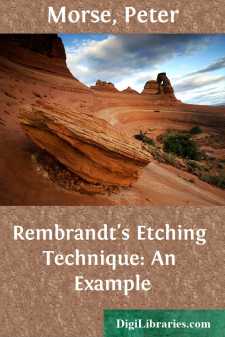Categories
- Antiques & Collectibles 13
- Architecture 36
- Art 48
- Bibles 22
- Biography & Autobiography 813
- Body, Mind & Spirit 142
- Business & Economics 28
- Children's Books 14
- Children's Fiction 11
- Computers 4
- Cooking 94
- Crafts & Hobbies 4
- Drama 346
- Education 46
- Family & Relationships 57
- Fiction 11828
- Games 19
- Gardening 17
- Health & Fitness 34
- History 1377
- House & Home 1
- Humor 147
- Juvenile Fiction 1873
- Juvenile Nonfiction 202
- Language Arts & Disciplines 88
- Law 16
- Literary Collections 686
- Literary Criticism 179
- Mathematics 13
- Medical 41
- Music 40
- Nature 179
- Non-Classifiable 1768
- Performing Arts 7
- Periodicals 1453
- Philosophy 64
- Photography 2
- Poetry 896
- Political Science 203
- Psychology 42
- Reference 154
- Religion 513
- Science 126
- Self-Help 84
- Social Science 81
- Sports & Recreation 34
- Study Aids 3
- Technology & Engineering 59
- Transportation 23
- Travel 463
- True Crime 29
Rembrandt's Etching Technique: An Example
by: Peter Morse
Categories:
Description:
Excerpt
Rembrandt's Etching Technique: An Example
A Rembrandt print in the collection of the Smithsonian Institution has been made the subject of a study of the artist's etching technique. The author is associate curator, division of graphic arts, in the Smithsonian Institution's Museum of History and Technology.
All footnotes appear at the end of this paper.
Rembrandt's print, Landscape with a hay barn and a flock of sheep, is a singularly apt example of the variety of etching treatment used by the artist in his mature period. The print, in black ink, 83 × 174 mm. in size (approximately 3-1/2 × 7 inches), is signed and dated 1650. It shows a peaceful Dutch landscape along the Onderdijk Road on the south side of the Saint Anthony's Dike, only a short walk from Rembrandt's home in Amsterdam. The picture is, as usual, the mirror reversal of the actual scene.
The observer's attention, from his raised position, is first drawn to the center of the print, attracted by the bright highlights on the trees and barn, then is snapped abruptly to the left side by the figure of the woman outlined against the sky. Now the eye moves slowly across the bottom, noticing the flock of sheep and the shepherd, and is led further by the soft dark line of the creek bank, to pick up the distant town and then the cows on the right. Only after completely circling the composition does one notice the horse, rolling in the grass and joyfully kicking its feet in the air.
Such artistic command seldom comes spontaneously. In Rembrandt's case, it is clearly the result of careful preparation, many years of learning and experience, and hard work in the creation of each picture. Such a process has produced in this print—one of nine landscapes which mark a turning point in 1650—a work of stylistic synthesis, which integrates Rembrandt's previous knowledge and leads on to his later masterpieces.
FIGURE 2
Mirror reversal of Landscape with a hay barn and a flock of sheep.
In 1650 Rembrandt was evidently in a tranquil state of mind. He was 44 years old. Young Hendrickje Stoffels, who had entered his household in 1645 as a maid, was well settled as housekeeper and mistress. Geertghe Dircx—who had been the nurse of Rembrandt's son, Titus, since the death of his wife, Saskia, in 1642—had just been taken to an institution after a nasty breach of promise suit. Rembrandt's finances were in good shape; his insolvency was not to come until 1656, after the international economic crisis of 1653. The artist certainly had the fullest confidence and experience in his working methods, having already done close to 250 prints. This state of well-being is reflected in the fact that of the 27 prints Rembrandt did in the three years, 1650-1652, no fewer than 14 are landscapes of a serene character. This is an unusually large proportion of a single subject and surely reflects the artist's state of mind, which helped him to produce this masterpiece of serenity, humor, and technical virtuosity.
His etching technique can be clearly studied in this print. In summary, all the evidence shows that Rembrandt here laid a foundation of lines on his plate with a single etching. He then mantled the sketch with rich drypoint lines, to give a sensitive chiaroscuro to the finished work. The integration of etching and drypoint is striking. There are few areas of this print (except the sky) that do not contain both kinds of line....


